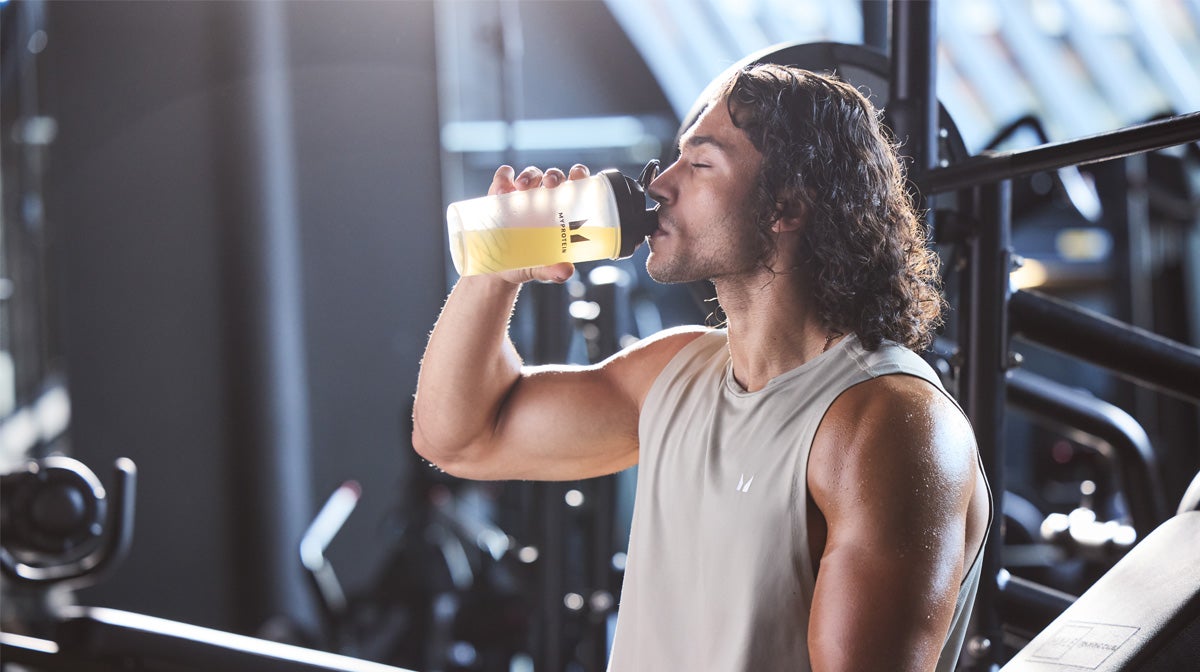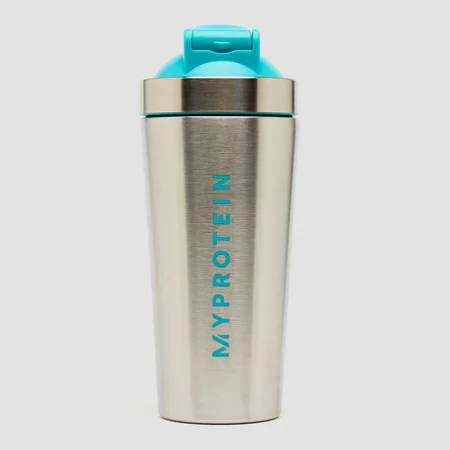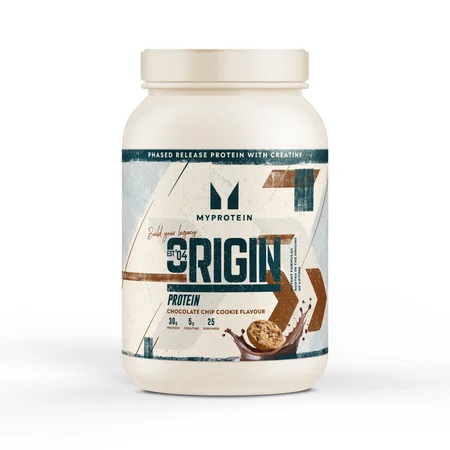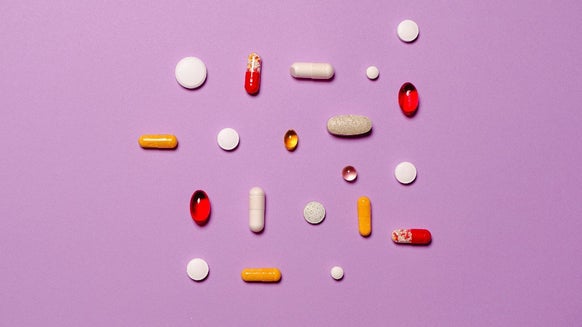
If you've been in the fitness world, you'll have heard about creatine. It’s not a trend — it’s the most-researched and proven supplement in sports nutrition, with countless studies validating its effectiveness.
But its popularity has led to a lot of misinformation online, with false claims about everything from kidney damage to hair loss. Consider this article your definitive guide.
We’re cutting through the noise to provide nothing but the facts: what creatine is, how it fuels your performance, the different forms available, and answers to your biggest questions.
- What is creatine?
- How does creatine work?
- What does creatine do?
- Types of creatine supplements
- Benefits of creatine
- How to take creatine
- Timing of creatine consumption
- Dosage recommendations
- Potential side effects of creatine
- Creatine FAQs
What is Creatine?
Creatine is a naturally occurring compound found in muscles and the brain that helps produce energy during high-intensity exercise, essentially acting as an “energy recycler”.
Supplementation has been shown to improve exercise performance, increase lean body mass, and support recovery.1 It might even have a positive effect on mental health. Food Sources High in Creatine
Creatine is naturally found in food sources such as meat, poultry, fish and shellfish. Herring has one of the highest amounts of creatine with 6-10g/kg. Pork (5g/kg), beef (4.5g/kg), salmon (4.5g/kg) and tuna (4g/kg) are other food sources with the highest creatine content.
How Does Creatine Work?
Creatine works by increasing the availability of phosphocreatine in the muscles, which helps to regenerate adenosine triphosphate (ATP) — the primary energy source for muscle contractions during short, intense activities.1
During high-intensity exercise, like weightlifting or sprinting, ATP is rapidly depleted, and phosphocreatine helps replenish it, allowing muscles to sustain performance.
By boosting ATP production, creatine allows you to train harder for longer, improving strength, power, and potentially muscle growth over time.
Additionally, creatine increases water retention in muscle cells, creating a more anabolic environment that supports recovery and muscle volume.
What Does Creatine Do?
Creatine supports short bursts of intense activity by regenerating ATP, allowing muscles to continue contracting with force, and over time, this increased energy availability improves strength, power, and muscle endurance.
Creatine also causes water retention in muscle cells, leading to increased muscle volume and a fuller appearance, and this cell hydration aids protein synthesis, reduces muscle breakdown, and supports recovery.
Additionally, creatine influences cell-influencing pathways, such as the mTOR pathway, promoting muscle growth.2

Truth About Creatine 'Helping' Weight Loss | Nutritionist Reveals All
Yet more creatine myth-busting....
Types of Creatine Supplements
Creatine supplements come in many different forms, but it is essential to know that while different versions have been created to claim better solubility or absorption, studies consistently show that creatine monohydrate remains the most effective.
Here is a breakdown of the most common types of creatine you will find on the market:
Creatine Monohydrate
Creatine monohydrate is the most researched and widely used form of creatine, with decades of evidence proving its effectiveness for increasing strength and muscle mass.3
- It is the most cost-effective form of creatine available.
- It requires either an initial loading phase or a longer period of consistent low-dose supplementation to fully saturate muscle stores.
Micronised creatine is simply monohydrate processed into smaller particles for better solubility in water.
Other Forms of Creatine
While often marketed with enhanced properties, other types of creatine supplements have not demonstrated superior efficacy compared to monohydrate:
Creatine Hydrochloride (HCl): Marketed for enhanced solubility, some users report it causes less bloating and water retention. Buffered Creatine (Kre-Alkalyn): Claimed to be more stable at lower pH levels, potentially minimising digestive discomfort, but research has not shown it to be more effective than monohydrate. Creatine Ethyl Ester (CEE): Claims of better absorption have been disputed, with studies suggesting it's no more effective than monohydrate and may degrade more quickly.3 Creatine Nitrate: Combines creatine with a nitrate molecule, with the potential added benefit of improved blood flow from the nitrate component. Creatine Magnesium Chelate: Combines creatine with magnesium, which is a cofactor in ATP production.

Creatine Pills Vs Powder | Absorption Rates Don't Affect Effectivity
The choice is yours....
Benefits of Creatine
Muscle Mass and Strength
Creatine supplementation promotes muscle growth by increasing ATP availability, allowing for longer and more intense training sessions.
It also supports protein synthesis and reduces muscle breakdown, leading to greater muscle size and strength over time.
Exercise Performance
By boosting phosphocreatine levels, creatine allows for better performance during high-intensity exercises, improving power output and endurance.
It’s ideal for sports that involve repeated, short bursts of effort, such as sprinting, weightlifting, and interval training.
Recovery and Glycogen Replenishment
Creatine speeds up the replenishment of muscle phosphocreatine stores and glycogen (muscle energy), which is crucial for sustained energy and promoting faster recovery between sets and workouts.
Brain Function
Creatine is believed to benefit brain function by boosting ATP production in brain cells, potentially improving memory, reasoning, and reducing mental fatigue.
This is particularly noticeable in situations where the brain is under stress, such as sleep deprivation.
Potential Therapeutic Effects
Creatine may reduce the risk of injury and aid injury rehabilitation by helping to maintain muscle mass during periods of immobilisation.
It’s also a useful supplement for older adults, helping to slow down age-related muscle loss (sarcopenia) while supporting improved cognitive health.
How to Take Creatine
The most effective way to increase muscle creatine stores is to begin with a "loading" phase, before moving on to a "maintenance" phase.
Alternatively, you can skip the loading phase and just take 3-5g daily, although muscle saturation will take a while longer (typically 3-4 weeks).1
Creatine Loading Phase
The creatine loading phase is when you take a high daily dose to maximise your muscle stores as quickly as possible.
This method allows you to start seeing performance benefits in the gym much sooner, leading to better long-term progression.
- A typical loading strategy is taking 20g of creatine daily (often split into four 5g doses) for 5-7 days.
- While this approach ensures fast saturation, the need for multiple doses throughout the day can be less convenient.
Creatine Maintenance Phase
The maintenance phase is a more convenient approach, as you only need to take your creatine once or twice a day.
This lower, consistent intake can also help to reduce the side effects that sometimes come with loading, such as water retention or stomach cramps.
A typical maintenance dose is 3-5g a day.
Timing of Creatine Consumption
Timing isn’t crucial for creatine’s effectiveness because the goal is saturation, not acute dosing — consistency is key to maximising muscle stores.
Some evidence suggests a slight benefit to taking it post-workout alongside carbohydrates and protein to improve uptake, but the difference is minimal, so choose the time that best fits your routine.

When Is The Best Time To Take Creatine?
Before working out, or after? Does it even matter?...
Dosage Recommendations
You may choose to go through a “loading” phase to saturate your muscle creatine stores, and after this, you’ll only need to take a reduced maintenance dose.
During the loading phase, take 5g of creatine monohydrate four times a day for 5-7 days, and during the maintenance dose, take 3-5g a day.
Potential Side Effects of Creatine
Creatine is one of the safest supplements available to buy, with over 1,000 studies supporting its safety, and long-term use does not require cycling on and off.1
Dehydration
Creatine can cause water retention in muscles, potentially pulling water from other areas of the body, which may increase the risk of dehydration, so to combat this, stay well hydrated, especially during the loading phase.
Digestive issues
Some people experience stomach discomfort when taking creatine supplements, especially when taking higher doses during the loading phase, and if this is the case, spread multiple smaller doses throughout the day or switch to a lower daily dose (3-5g) without loading.
Creatine FAQs
Does creatine make you gain fat?
No, creatine does not make you gain body fat. This is a common misconception. While it does often lead to an initial increase in body weight, this is most likely due to water retention in the muscles as it pulls water into the cells.

Should I Use Creatine Whilst Cutting Fat?
Spoiler: Yes, and it can actually help your cut....
Is creatine powder better than pills?
Neither form is inherently better for effectiveness, as consistency in daily dosing is the key to muscle saturation. Powder is typically more cost-effective per serving and is versatile (easy to add to shakes or smoothies), while pills offer maximum convenience for accurate, on-the-go dosing. Do I need to take creatine on rest days?
Yes. Taking creatine daily, including on rest days, is essential to keep your muscle stores fully saturated. The goal is to maintain maximum creatine levels at all times, ensuring your muscles are always ready for your next high-intensity workout.
Does creatine cause hair loss?
There is limited evidence linking creatine to hair loss, with one study on rugby players finding it increased DHT levels, a hormone associated with hair loss, but the overall body of evidence does not support a causal link, and more research is needed.4
Can creatine cause kidney damage?
There is no evidence suggesting that creatine can cause kidney damage in healthy individuals when taken as recommended, as confirmed by numerous long-term studies.1
However, those with pre-existing kidney conditions should consult a healthcare professional before use.
Who should take creatine?
Creatinebenefits a wide range of people, from strength and power athletes to endurance athletes and older adults, as it supports muscle strength, recovery, and cognitive health, making it an excellent daily supplement.
Who should avoid creatine?
Creatine supplementation is not advised for people with pre-existing kidney conditions, and pregnant or breastfeeding women should also avoid it due to limited research on its supplementation during these stages.
Should I cycle creatine on and off?
No, there is no scientific evidence to suggest that cycling creatine is necessary, and its benefits are maintained with continuous long-term use.
Cycling was once recommended out of caution, but current research indicates that continuous daily supplementation is safe and effective.1 However, it is sensible to take a break if, for example, you are on holiday and your training and nutrition regimen has been relaxed.
Can women take creatine?
Absolutely, women can and should take creatine if they want to improve their performance, muscle mass, and strength, and the benefits are the same for both men and women.1
Does creatine work without working out?
Creatine will still saturate your muscles if you don't work out, and you may experience some cognitive benefits, but to maximise the strength and muscle growth benefits, it must be used in conjunction with a training programme.1
Myprotein Creatine Supplements
Our range of creatine supplements offers options for every goal and preference:
- Tried, tested, and trusted to improve performance in high-intensity exercise.
Each serving contains 3g of creatine monohydrate to help you break PBs. - Designed by our nutritionists to support your physical performance and deliver maximum results.
- Rated 5 stars by over 5000 customers—a proven fan favourite.
- A convenient and hassle-free solution, perfect for taking on the go without the need for mixing.
Provides the same scientifically proven benefits as our powder to support your training. - The ideal option for anyone looking for an easy-to-use, precision-dosed creatine supplement.
- Seriously tasty and independently verified, offering a delicious alternative to powders or tablets.
- Each serving provides a guaranteed 3g of pure creatine monohydrate.
- No powders, no mixing, no mess—just grab, chew, and go.
- Tested by world-leading laboratories to ensure accurate dosing and ingredient purity.
Features Creapure®, the global standard for creatine purity (99.99% pure creatine monohydrate). - Formulated for athletes who demand the highest quality and effectiveness in their supplements.
- Delivers 3g of creatine per serving to fuel repeated bursts of high-intensity effort.
- Informed Choice certified, giving you absolute confidence in its purity and quality.
Combines 30g of protein and 5g of creatine in a single, powerful serving for muscle growth and performance. - Features a phased-release protein blend to support muscle recovery long after your workout.
- An all-in-one solution for those who want to fuel their performance and recovery simultaneously.
Take Home Message
Creatine is one of the most reliable and effective supplements available, with well-known benefits for performance, muscle mass, and cognitive health.
If you’re looking to give your training and recovery an extra edge, creatine monohydrate is a well-researched, safe, and cost-effective choice that is a great fit for nearly everyone.
READ MORE HERE:

Creatine Loading Or Cycling? And How Much Per Day?
There are more approaches to creatine loading and cycling than you think....

How Creatine Is Made | In The Lab
The process behind this popular supplement....

Does Creatine Cause Weight Gain? Can it Support Weight Loss? Your Questions Answered
Get to know this muscle building supplement....















